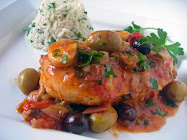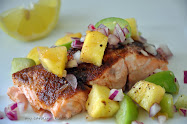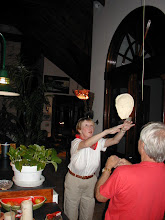Summertime,
And the livin' is easy
Fish are jumpin'
And the cotton is high
Your daddy's rich
And your mamma's good lookin'
So hush little baby
Don't you cry
Lyrics by George Gershwin
It is definitely summertime here in the US. A time when I certainly don’t want to go near a hot stove in the evening. That’s when I look to simple suppers on the porch, sitting under the ceiling fan, a cold drink in hand, waiting for dusk and the fireflies to appear.
This succotash recipe is a breeze to put together. Packed with the bold flavors of cilantro, garlic, and a tiny bit of curry powder, it also provides plenty of crunch from the cucumber, red onion, tomatoes, and fresh corn kernels. Speaking of corn, I feel it’s essential to use fresh corn. Canned or frozen corn just isn’t the same in summertime dishes.
Succotash is a very versatile dish. It makes a great side dish for grilled chicken or pork. You could add some sautéed chunks of ham and turn it into a main course salad. If you omit the tomatoes, it could be used as a stuffing for tomatoes. Or if you don’t like lima beans, use fava beans, or make it southern with smoky black-eyed peas.
As the song says, “summertime and the livin’ is easy.” It’s time to get out of the kitchen, put your feet up, enjoy life, and stay cool.
Summertime Succotash Salad
Adapted from Sheila Lukins
3 cups cooked baby lima beans
3 cups fresh corn kernels, blanched
1 cup diced European cucumber
1 cup grape tomato halves
¼ cup chopped red onion
2 scallions with 3” of green tops, sliced
2 tablespoons chopped fresh cilantro
Kosher salt and freshly ground black pepper
Vinaigrette:
2 tablespoons cider vinegar
½ teaspoon Dijon mustard
1 small clove garlic, minced
½ teaspoon sugar
1/8 teaspoon good curry powder
Kosher salt and freshly ground black pepper
3 tablespoons extra-virgin olive oil
Combine the lima beans, corn, cucumber, tomato halves, red onion and scallions in a bowl. Season with salt and pepper and set aside. Place the vinaigrette ingredients in a small jar with a secure lid and shake well. Pour the vinaigrette over the vegetables and toss very gently with a rubber spatula. Refrigerate until ready to serve. Shortly before serving, toss with cilantro. Taste and adjust seasonings. Serve cold or at room temperature. 8 servings.





























































